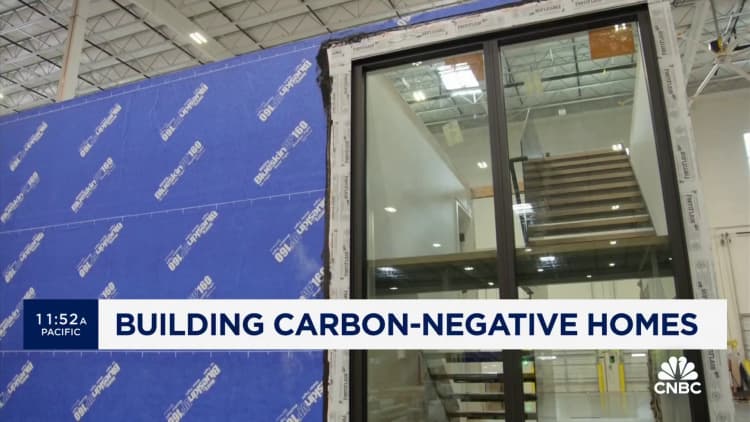This startup claims its new homes will generate more energy than they use
2 min read

The homebuilding industry is in a race to make its homes environmentally cleaner and more energy efficient. Real estate as a whole is a massive carbon offender. Both the construction and operation of buildings account for 40% of global carbon emissions.
Solar panels and energy-efficient appliances help cut emissions, but more needs to be done to improve building construction. That’s what some prefab homebuilders like Dvele, Clever, and a California-based startup called Aro Homes are doing. Aro’s CEO claims its homes will ultimately be carbon-negative.
“The excess renewable energy that we generate after 16 years, that offsets all the carbon that was used to build the home,” said Carl Gish, CEO of Aro Homes. “We’re not aware of any other home builders in the United States that are building homes as environmentally friendly.”
Gish points to four critical elements: First, Aro claims to use the most sustainable materials possible, like more timber and less concrete. Then the company’s production process focuses on building much of the home offsite, where they can monitor quality control and engineering. The homes incorporate energy-efficient systems and appliances. Each home has solar with a battery backup.
“We’re very focused on using materials in building our homes that have as low carbon footprint as possible, and they need to be practical, they need to be accessible, they need to be affordable, they need to be reliable in the supply chain,” added Gish.
Aro homes aren’t cheap. They build large homes and the latest costs nearly $5 million. Part of that cost is the price of land in California, but it also includes the construction and materials. Investors say, once scaled, they believe Aro can make the homes more affordable.
“We have the ability to go very mass market with this, but I think this first home is really, it’s an engineering statement that demonstrates what’s possible,” said Scott Brady, founding partner at Innovation Endeavors, an investor in Aro. “We can deploy that across a much broader set of geographies and quite frankly, a much broader set of zip codes.”
Aro is backed by Innovation Endeavors, Western Technology Investment Fund and Stanford University dy/dx. It has $21 million in funding to date.
Aro has only built a few homes, but Gish says it will be on track to build 36 homes per year by the end of 2024. The company’s production facility can handle 100 a year. It’s unclear how much consumers will be willing to pay for a carbon-negative home, given how pricey the housing market is right now, and while mortgage rates remain stubbornly high.
CNBC producer Lisa Rizzolo contributed to this piece.







